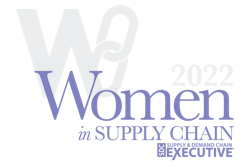
The security industry has not been immune to supply chain challenges caused by pandemic disruptions. What’s more, these challenges have coincided with a period of profound change. Digital transformation and modernization are reshaping the security landscape, driven by pressures both external and internal to the industry. The globalized supply chain crisis introduces yet another challenge.
Supply chain issues will be a dominating trend in 2022 and require that the security industry get creative. Semiconductor shortages, global logistics bottlenecks, and corresponding cost increases will impact everything from readers and control panels to sensors and detectors. These products have special requirements that their supply chains be both reliable and secure.
Special needs of the security industry
Anyone who has shopped for anything in recent months has felt the impact of global supply chain uncertainty. From furniture to food to cars, very few have not experienced the crunch of global supply chain stress. Many of the components that are used to make a variety of goods are unavailable, and those that are available seem to be stuck in containers at ports waiting to be unloaded. As labor shortages and surges in demand continue, is will affect virtually product in every industry. Even when needed supplies are available, they aren’t always in the right place.
One of the biggest challenges facing the security industry is the semiconductor shortage. Integrated circuits (ICs) are in particularly high demand, since they form the backbone of an extensive variety of products. Shortages are expected to extend well into 2022 and potentially early 2023.
Nevertheless, supply availability and security risks must be mitigated. Ongoing shortages pose significant challenges to how the industry secures people, data, and physical assets against an expanding and ever more complex threat landscape. Vendors and security administrators need to consider a variety of strategies and approaches.
Supply chain strategies
At the top of the mitigation strategy list is working with a trusted partner that has global strength along with local presence. These types of organizations have their own trusted supply chain partners and strong supply lines to their customers. They also have more reach when it counts but also can help in regionally specific ways. The ones with the best reputations and longevity are more likely to weather the storm. The March 2022 mainland China outbreak and subsequent shutdowns of major Shenzhen and Shanghai manufacturing facilities is a reminder that further disruptions cannot be ruled out.
Second, be flexible. Be willing to consider alternative products if the primary choice is not available. This requires working with a supplier that has the portfolio breadth to support an adequate level of flexibility.
It is also important to hedge against unexpected price increases. Today’s labor and materials shortages have already increased costs and are likely to make future increases inevitable. But some suppliers are more likely to absorb a portion of higher supply costs than others. Plan for the worst-case scenario when preparing budgets.
Meanwhile, harness the power of data and analytics to better predict buying patterns and support forecasting efforts. This makes it possible to better understand underlying drivers that improve visibility into needs and lead times. Maintaining open dialog with partners and suppliers can similarly shine a light on supply options and provide early warning as the environment changes.
Most of all, be patient. The last two years have been challenging. Everyone has endured massive change both personally and professionally. It is frustrating, but it is also important to remember that from a supply chain perspective, everyone is in the same situation. Operations and customer service teams are working tirelessly to address the shortages and minimize customer impact. Things will get better.
In addition to adopting these strategies, it is essential that organizations pay special attention to the security of their supply chain.
Securing the security supply chain
The Covid-19 pandemic has not just impacted supply availability, it has also created new supply chain security vulnerabilities. Minimizing these vulnerabilities is especially important for the supply chains that handle security products. Security products often must comply with some of the industry’s strictest security requirements. For instance, the Customs-Trade Partnership Against Terrorism (C-TPAT) certification process examines physical and procedural security aspects of an entire supply chain using a documented set of standard requirements.
An example of the security products that are used to secure supply chains is Radio Frequency Identification, or RFID, solutions, which saw increasing use even before the pandemic. This contactless asset identification technology improves process efficiency and prevents errors. During the pandemic, this technology also increased safety by making more processes contactless and touchless. It also has enabled capabilities like location-based Covid-19 contact tracing so businesses could remain open while protecting their people.
Another supply chain security vulnerability is counterfeit products that contribute to lost sales and angry customers. Major brands saw the threat of grey market goods rise as recurring waves of Covid-19 outbreaks turned shoppers to e-commerce channels with inherent cybersecurity vulnerabilities. These products have been protected by using Near Field Communications (NFC) tags to ensure the authenticity of each one. The tags are attached to or embedded inside each product, providing a unique digital code every time it needs to be authenticated, from the time it is manufactured and on through its lifecycle.
This product authentication approach is especially important for high-value items such as rare footwear, whiskey and other limited-edition bottled spirits, and one-of-a-kind collectibles and antiques. The authentication process is simple: tap the product’s NFC tag with an NFC-enabled smartphone or tablet to quickly and securely communicates all necessary authentication information. This has become an increasingly attractive solution for trusted brand authentication and protection across a wide range of products and industries.
Every industry has experienced supply chain challenges over the past two years and the security industry is no exception. There are numerous strategies organizations can employ to mitigate supply disruptions. Equally important, these disruptions have introduced new security risks amid an already dangerous threat environment. These risks, too, must be addressed, and there are numerous security technologies that accomplish this. The goal is to successfully navigate today’s crisis while ensuring that the security products the world depends on have been manufactured to all required security standards and delivered through a secure supply chain.














![Pros To Know 2026 [color]](https://img.sdcexec.com/mindful/acbm/workspaces/default/uploads/2025/08/prostoknow-2026-color.mduFvhpgMk.png?ar=16%3A9&auto=format%2Ccompress&bg=fff&fill-color=fff&fit=fill&h=135&q=70&w=240)



